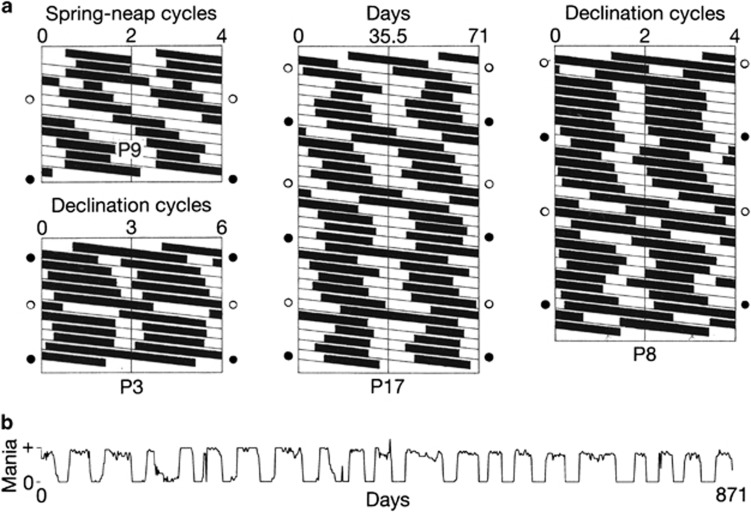Figure 4.
Bipolar mood cycles exhibited a synchrony with every second or every third bi-weekly lunar cycle that was periodically interrupted by 360° or 720° phase-displacements that coincided with lunar perigee-syzygies (supermoons). Raster double plots (a) show manic episodes as black bars and depressive episodes as white bars. Open circles and closed circles adjacent to raster plots show times of 206-day recurrences of perigee-syzygies in their full-moon and new-moon phases, respectively. Patient identities are shown beneath raster plots. Vertical alignment of manic episodes indicates that they had become synchronous with every second or every third bi-weekly lunar cycle, as confirmed by χ2 periodogram analyses (Figures 1 and 2). Periodically, the course of manic episodes deviated diagonally to the right, leading to 360° or 720° phase-displacements of the bipolar cycles. These displacements regularly coincided with recurrences of perigee-syzygies. Each phase-displacement was followed by re-establishment of the bipolar cycles’ previous phase-relationship to the lunar cycles. For comparison with the raster plots, a linear plot of the time-series of Patient 17’s daily self-ratings of mania is shown (b). For further analyses of the relationships of Patients 8 and 17’s mood cycles to lunar cycles, see Figure 5, Supplementary Figures S5 and 6.

